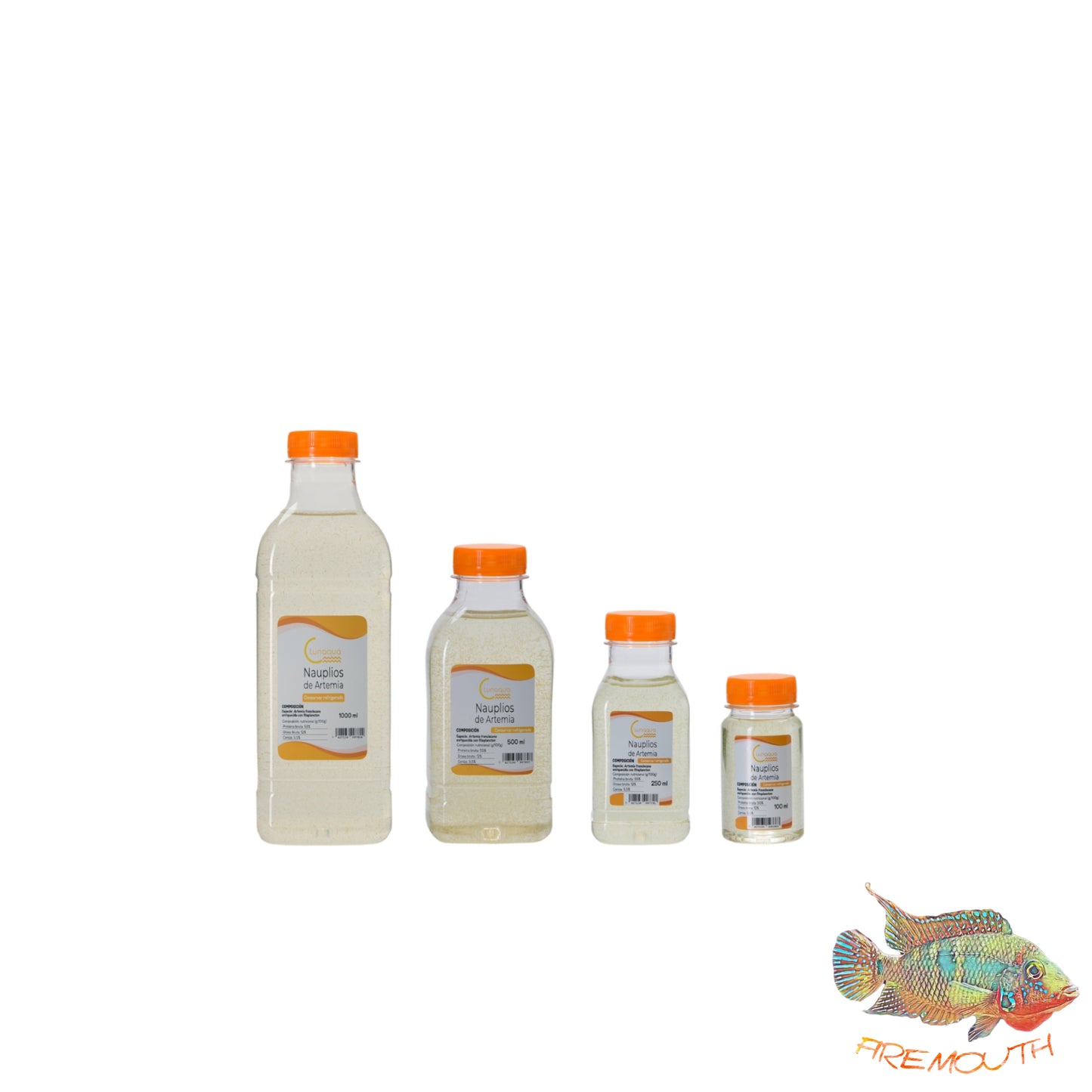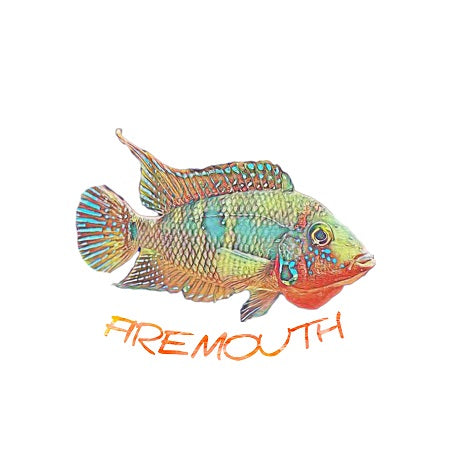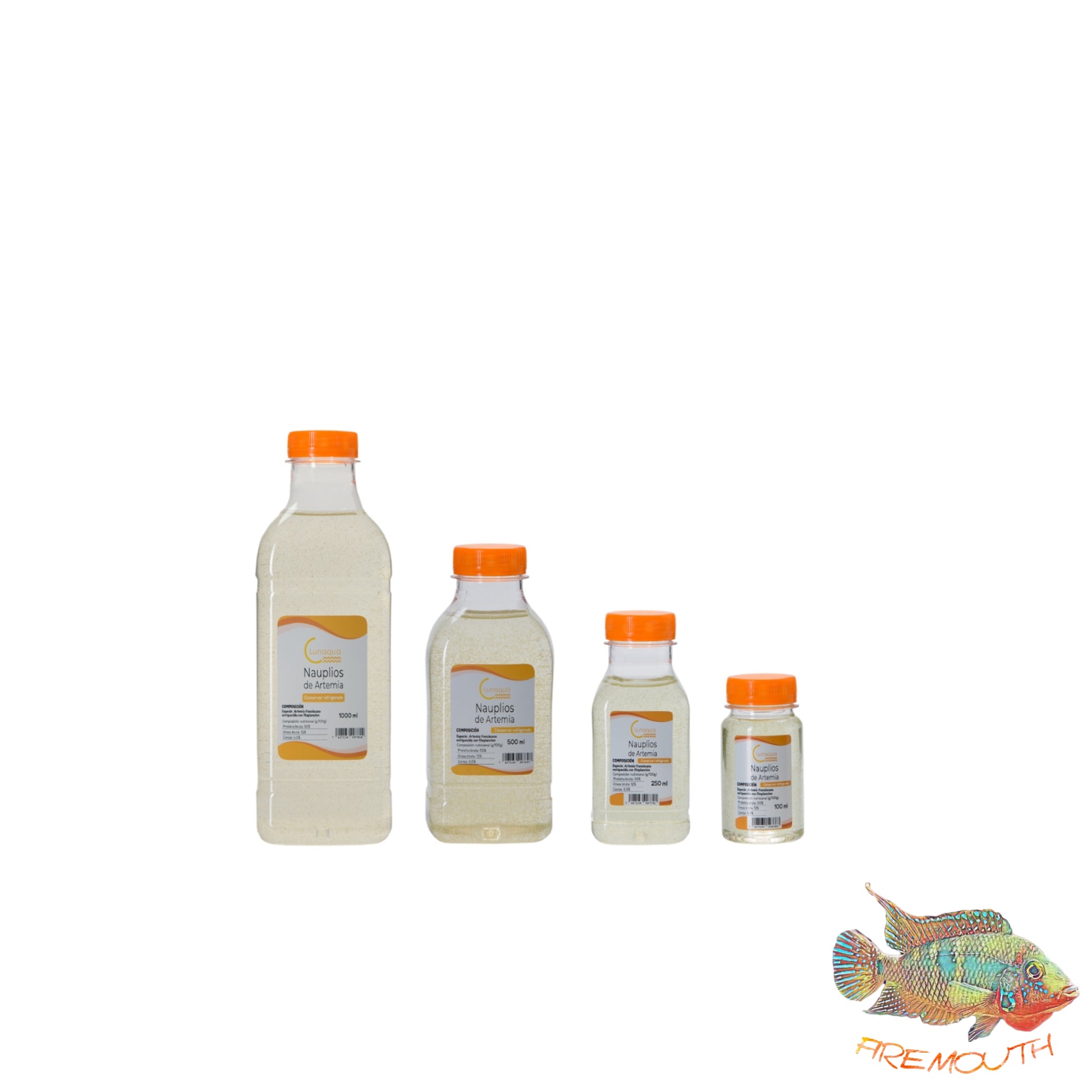Live brine shrimp nauplii
Live brine shrimp nauplii
Couldn't load pickup availability
General shipping information
General shipping information
SHIPPING :
Orders are generally shipped within 24/48 business hours with a shipping agency.
*Orders DO NOT go out on Fridays to avoid them being stuck all weekend at the transport agency.
You can check the status of your order by sending us an email to firemouthaquaristic@gmail.com
Shipping price:
SPAIN PENINSULA:
- NACEX 24/48H - €5.95 | FREE ON ORDERS + €60
- NACEX SHIPPING LIVE ANIMAL 24H €15 | FREE ON ORDERS +150€
- NACEX HEAVY DELIVERY - €9 | €15 depending on product
- PICKUP FROM WAREHOUSE (ONLY FOR ALICANTE) - €0
ISLANDS, CEUTA AND MELILLA
We use the Correos parcel service with a flat rate of €22
However, write to us and tell us what you are interested in because if it is a smaller package, the costs will be much cheaper.
You only pay the exact Post Office rate
Write to us if you have questions
EUROPE / EUROPE
We use the Correos parcel service with a flat rate of €45
However, write to us and tell us what you are interested in because if it is a smaller package, the costs will be much cheaper.
We use the parcel service of Correos with a flat rate of € 45
However, write us and tell us what you are interested in because if it is a smaller package, the costs are much cheaper.
Fish Shipping Information ONLY
Fish Shipping Information ONLY
**Only valid for Spain PENINSULA
Shipping fish costs €15 (or free from €150.00) and is sent via urgent NACEX , delivering the package before 7pm.
You can also choose to pick it up at the agency first thing in the morning on
day delivery is scheduled, in this case, please write to us once the order has been placed at 664373985.
Once the package arrives you will have one hour to acclimatize and resolve any incidents.
of the animal, if it is not done in this way the right to claim the animals will be lost.
If you want to find a greater variety of fish, you can request to join the WhatsApp offers group where we will share a super large list of fish in which you will find a great variety of fish for very attractive prices.
Artemia nauplii
Live brine shrimp nauplii in a bottle.
Laboratory grown and fed exclusively with phytoplankton.
DESCRIPTION
Animalia Kingdom
Phylum: Arthropoda
Subphylum: Crustacea
Class: Branchiopoda
Order: Anostraca
Family: Artemiidae
Genus: Artemia
Species: Artemia salina (Linnaeus, 1758)
General characteristics
Small branchiopod crustacean.
Since the 1930s, its use in aquaculture has increased considerably, and it is currently the best and in some cases the only live food for the first larval stages of many species of fish and crustaceans.
Its distribution extends to all continents except Antarctica. They are found in lakes with very high salinity (up to 300g/L of salt) where their predators cannot survive. Their great capacity for adaptation means that we can find them even in fresh water.
They survive in waters with a high oxygen deficit (supporting levels of up to 0.5 mg of oxygen per liter in their adult phase).
It is used in the breeding of fish and crustaceans for both human consumption and aquarium farming. Used by betta fish breeders.
The nutritional value of stage I nauplii is higher than in stages II and III, the dry weight and caloric content decrease as they increase in size if they are not fed and the increase in size does not help the feeding of certain predators. that these, having a lower swimming rate, require that the brine shrimp have a more limited swimming capacity. The color of the brine shrimp is also notable, since when it has just hatched it is a dark orange color (more visible to predators) and as it increases in size it becomes paler and more transparent if it is not fed.
It has a high digestibility and covers the macronutrient and micronutrient requirements of the larvae of marine and freshwater fish, as well as crustaceans.
Newly hatched nauplii have a high level of fatty acids.
Through bioencapsulation techniques we can introduce into the newly hatched brine shrimp components that interest the predator (vitamins, pigments, amino acids,...).
Nutritional value
High value in vitamins and proteins
Polyunsaturated fatty acids and high content of interferons (glycoproteins synthesized by cells infected by viruses that inhibit their multiplication)
Considerable amounts of beta carotene, a substance that enhances and intensifies the color of the fish it feeds (an example of this is flamingos, whose characteristic pink color stands out due to feeding on brine shrimp).
Approximate composition of Artemia salina:
Proteins 52-74%
Carbohydrates 7-17%
Lipids 8-16%
Sugars 3-4%
Humidity 85-90%
Ashes 9-20%
Advantages they present 0
cart
€0.00
We only sell to stores | Free shipping for orders over €100
Orders will be processed on the same day until Thursdays at 12:00
HOME
SHOP
ZOOPLANKTON
ARTEMIA NAUPLIUS
Artemia nauplii
Live brine shrimp nauplii in a bottle.
Laboratory grown and fed exclusively with phytoplankton.
DESCRIPTION
Animalia Kingdom
Phylum: Arthropoda
Subphylum: Crustacea
Class: Branchiopoda
Order: Anostraca
Family: Artemiidae
Genus: Artemia
Species: Artemia salina (Linnaeus, 1758)
General characteristics
Small branchiopod crustacean.
Since the 1930s, its use in aquaculture has increased considerably, and it is currently the best and in some cases the only live food for the first larval stages of many species of fish and crustaceans.
Its distribution extends to all continents except Antarctica. They are found in lakes with very high salinity (up to 300g/L of salt) where their predators cannot survive. Their great capacity for adaptation means that we can find them even in fresh water.
They survive in waters with a high oxygen deficit (supporting levels of up to 0.5 mg of oxygen per liter in their adult phase).
It is used in the breeding of fish and crustaceans for both human consumption and aquarium farming. Used by betta fish breeders.
The nutritional value of stage I nauplii is higher than in stages II and III, the dry weight and caloric content decrease as they increase in size if they are not fed and the increase in size does not help the feeding of certain predators. that these, having a lower swimming rate, require that the brine shrimp have a more limited swimming capacity. The color of the brine shrimp is also notable, since when it has just hatched it is a dark orange color (more visible to predators) and as it increases in size it becomes paler and more transparent if it is not fed.
It has a high digestibility and covers the macronutrient and micronutrient requirements of the larvae of marine and freshwater fish, as well as crustaceans.
Newly hatched nauplii have a high level of fatty acids.
Through bioencapsulation techniques we can introduce into the newly hatched brine shrimp components that interest the predator (vitamins, pigments, amino acids,...).
Nutritional value
High value in vitamins and proteins
Polyunsaturated fatty acids and high content of interferons (glycoproteins synthesized by cells infected by viruses that inhibit their multiplication)
Considerable amounts of beta carotene, a substance that enhances and intensifies the color of the fish it feeds (an example of this is flamingos, whose characteristic pink color stands out due to feeding on brine shrimp).
Approximate composition of Artemia salina:
Proteins 52-74%
Carbohydrates 7-17%
Lipids 8-16%
Sugars 3-4%
Humidity 85-90%
Ashes 9-20%
Advantages they present as food
They have a small size (400-500 microns when they have just hatched) and this makes them ideal for feeding fry.
Great efficiency in feed conversion.
They reinforce the hunting instinct of fish.
Excellent food for all types of fish and invertebrates, promoting their pigmentation and good health.
We can keep them cold to slow down their metabolism and increase oxygen levels so that they last a little longer.
Share it with whoever may be interested
5.0 / 5.0
(2) 2 total reviews

Muy recomendable
Nauplios de artemia vivos

